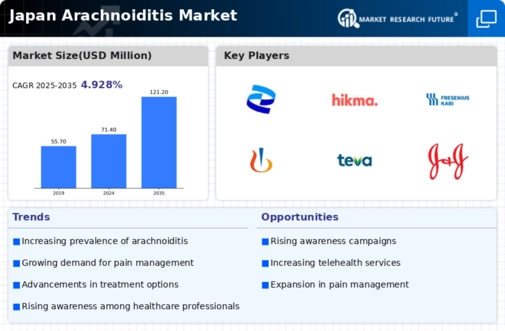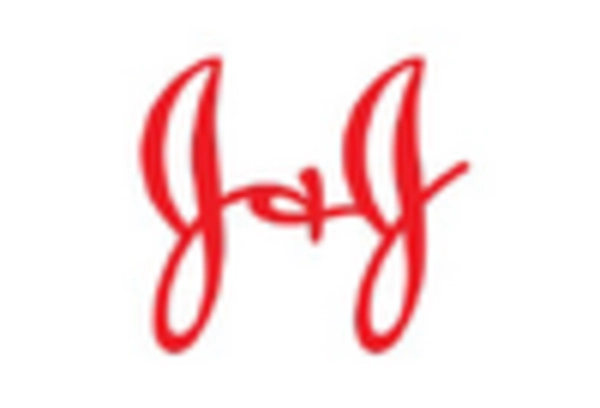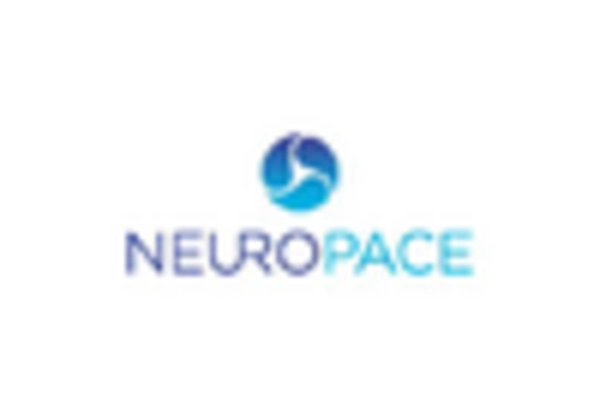Government Initiatives and Funding
Government initiatives and funding aimed at improving healthcare infrastructure are crucial drivers for the arachnoiditis market. In Japan, the government has been actively investing in research and development for rare diseases, including arachnoiditis. Recent allocations of approximately ¥10 billion ($90 million) for research into chronic pain conditions indicate a commitment to enhancing treatment options. These initiatives not only foster innovation but also encourage collaboration between public and private sectors, leading to the development of new therapies. As funding increases, the potential for breakthroughs in treatment options for arachnoiditis is likely to expand, thereby positively influencing the market.
Advancements in Diagnostic Techniques
Advancements in diagnostic techniques are significantly impacting the arachnoiditis market in Japan. Enhanced imaging technologies, such as MRI and CT scans, have improved the accuracy of diagnosing arachnoiditis, allowing for earlier detection and intervention. This is particularly relevant given that timely diagnosis can lead to better patient outcomes and more effective management of the condition. The Japanese healthcare system is increasingly adopting these advanced diagnostic tools, which may lead to a higher rate of diagnosis and, consequently, an increase in the demand for treatment options. As a result, the market is likely to experience growth driven by the need for innovative therapies tailored to diagnosed patients.
Increasing Incidence of Arachnoiditis
The rising incidence of arachnoiditis in Japan is a critical driver for the arachnoiditis market. Recent studies indicate that the prevalence of this condition has been steadily increasing, with estimates suggesting that approximately 1.5 to 2.0 cases per 100,000 individuals are diagnosed annually. This growing patient population necessitates enhanced treatment options and healthcare resources, thereby stimulating market growth. Furthermore, the aging population in Japan, which is projected to reach 36.5% by 2040, is likely to contribute to a higher incidence of chronic pain conditions, including arachnoiditis. As healthcare providers become more aware of this condition, the demand for effective therapies and management strategies is expected to rise, further propelling the arachnoiditis market in the region.
Emerging Biologics and Targeted Therapies
The emergence of biologics and targeted therapies represents a transformative driver for the arachnoiditis market. Recent advancements in biotechnology have led to the development of novel treatment modalities that specifically address the underlying mechanisms of arachnoiditis. In Japan, the approval of biologic agents for chronic pain management has opened new avenues for treatment, potentially improving patient outcomes. The market for biologics is expected to grow significantly, with projections indicating a value of ¥200 billion ($1.8 billion) by 2027. This trend suggests that as more targeted therapies become available, the arachnoiditis market will likely experience substantial growth, driven by the demand for innovative and effective treatment options.
Growing Demand for Pain Management Solutions
The growing demand for effective pain management solutions is a significant driver for the arachnoiditis market. Patients suffering from arachnoiditis often experience chronic pain, which can severely impact their quality of life. In Japan, the market for pain management therapies is projected to grow at a CAGR of 5.5% over the next five years, reflecting an increasing recognition of the need for effective treatment options. This demand is further fueled by the rising awareness of chronic pain conditions among healthcare professionals and patients alike. Consequently, pharmaceutical companies are likely to focus on developing targeted therapies for arachnoiditis, thereby expanding the market.

















Leave a Comment